#elephant seal
Text
Today's Seal Is: Took a hit off the blunt & coughed their lungs out!

#seals#pinniped#daily#mod ribbon#elephant seal#unidentified species#phocidae#submission#We already had this image featured but ill allow it for 4/20
3K notes
·
View notes
Text

Young elephant seal, complaining after being woken up by the photographer
By: E. O. Hoppe
From: Natural History Magazine
1951
2K notes
·
View notes
Text




As pups, Elephant seals are very curious of their surroundings and often go up to investigate photographers (who aren’t allowed to touch them and instead have to sit there getting poked and crawled on by these very large babies)
4K notes
·
View notes
Text
have not been able to get over this gif ever since I first saw it

891 notes
·
View notes
Text

A juvenile elephant seal napping on Point Reyes National Seashore
#seals#pinnipeds#mine#elephant seal#marine mammals#wildlife#nature#nature photography#naturalist#ecology#north america#animals#photography#california wildlife#point reyes#national parks#national park#seal#wildlife biology#marine biology#marine animals#marine life#marine biologist#California#bay area#northern california#norcal#ecologist#wildlife biologist#ocean
222 notes
·
View notes
Text

Elephant seals, formerly known as sea elephants.
Creatures of the sea. 1909.
Internet Archive
234 notes
·
View notes
Text

seal portrait i made in class
[id: a bust illustration of a female elephant seal looking towards the camera. she is coloured in shades of pink and mauve and she is very wrinkly. end id.]
264 notes
·
View notes
Text

& look. at you so Sweetly
315 notes
·
View notes
Text
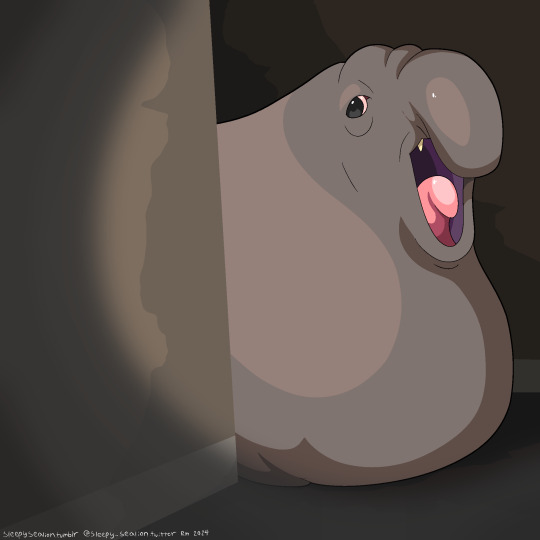
The chances of getting accosted by an 800 lb. Bull Elephant Seal in your home is low - but never zero.
#artists on tumblr#elephant seal#seal art#I really should make a side blog for this kind of art...#digital art
104 notes
·
View notes
Text


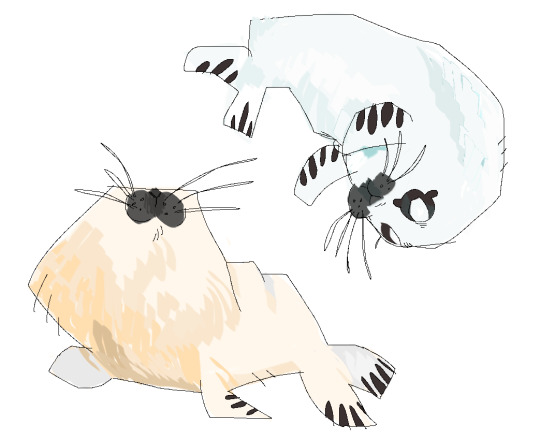
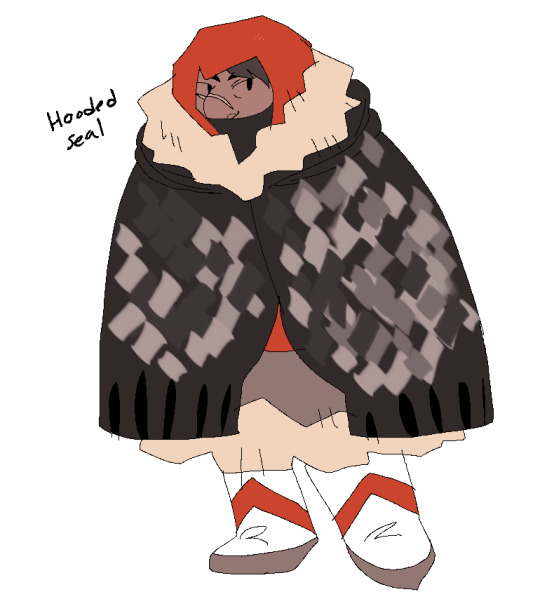

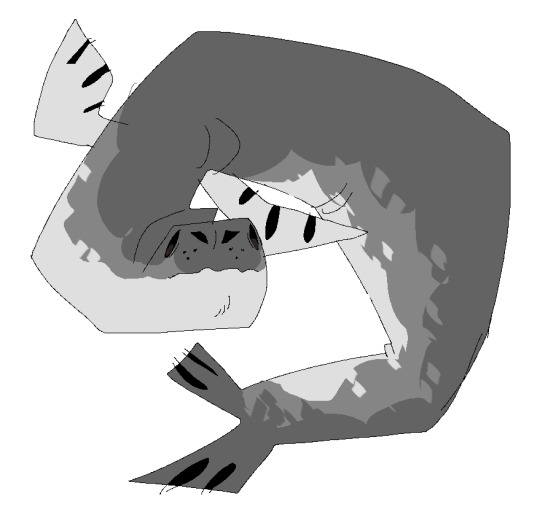
seal/sea lion/selkie doodle comp post bc i love them.
#seals#sea lions#selkie#elephant seal#harp seal#hooded seal#california sea lion#leopard seal#SORRY I DELETED THAT LAST POST....#so look at this one instead :)#compilation post#anyways back to pokemon ig#my art
572 notes
·
View notes
Text
I haven't covered any pinniped pals for Wet Beast Wednesday yet, so for my first one I'm going big. Really big. Elephant seal big. Elephant seals are not only the largest of all pinnipeds, they are the largest of all carnivorans and the largest marine mammals that aren't cetaceans. There are two species: northern (Mirounga angustirostris) and southern (Mirounga leonina), with the southern species being the larger of the two.
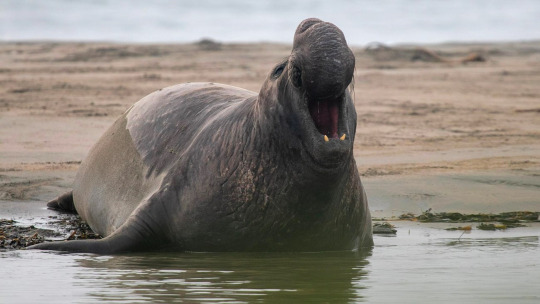
AAAAAAAAAAAAAHHHHHHHHH! (image: an elephant seal bellowing)
Elephant seals are true seals (as opposed to sea lions and walruses), meaning they lack external ears and their hind legs have fused into a sort of pseudo-flipper that allows for highly efficient swimming but is of little use when maneuvering on land. While it is common among pinnipeds for males to be larger than females, elephant seals exaggerated that with one of the most extreme size differences between sexes. Females of both species range from around 350 to 900 kg (880 to 1,980 lbs) and 2.5 to 3.6 m (8.2 to 11.8 ft) in length. Male northern seals average between 1,500 to 2,300 kg (3,300 to 5,100 lbs) and 4-5 m (13-16 ft) while southern males break the scale at 1,500 to 3,700 kg (3,300 to 8,200 lbs) and 4.2 to 5.8 m (14 - 19 ft). The southern species has the largest mass difference between sexes of any mammal, with the males averaging 5-6 times the weight of the females.

(image: male and female elephant seals chillaxing on a beach)
In addition to the size difference, the other major form of sexual dimorphism is that the male has his nose elongated into a proboscis. This snout serves two major functions: it amplifies the roars of the male allowing him to be remarkably loud and it traps and reabsorbs moisture when he exhales. This is important as the seals do not eat or drink when on land and recapturing moisture lets him stay hydrated.
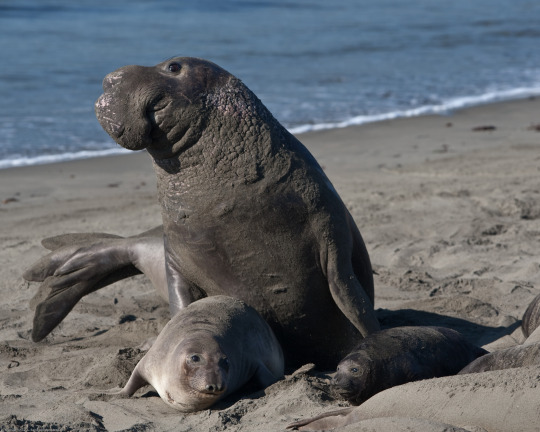
(image: a male[top], female [bottom left] and juvenile [bottom right] northern elephant seal)
Seals are adapted to spend the vast majority of their lives in the water and elephant seals are no different. They spend around 80% of their lives in the water and have many adaptations to aid in their lifestyle. Like most marine mammals, they have a thick layer of fatty blubber that preserves heat in cold water, reduces drag, and provides buoyancy. Like other seals, they can slow their heartbeats and redirect blood flow to the core of their body to avoid losing heat. Another seal adaptation is that veins returning blood to the heart grow near arteries carrying blood from the heart. This allows the cold returning blood to leech some heat from the arteries to avoid cooling down the body's core. They have a lot of blood to store oxygen, allowing for long dives. Elephant seals dive deep (averaging 300-600 m but occasionally much deeper) when searching for food. Females typically go on deeper but shorter dives than males. They can hold their breath for over 100 minutes, longer than nay non-cetacean mammal.. Their eyes are highly adapted to low-light conditions and their whiskers can sense motion in the water, both things that aid in finding food. Elephant seals are very opportunistic predators and will eat a large variety of fish and cephalopods.

(image: a female elephant seal swimming)
The 20% of time not spent at sea is mostly taken up by two yearly periods: the molting and breeding seasons. In both cases, the seal will haul out onto the beach and will not eat or drink until it has finished. Molting season lasts about a month and usually occurs in summer. Elephant seals undergo what are called catastrophic molts, where they not only shed and regrow their fur but their outer layer of skin. During the regrowth of their skin, extra blood has to be directed toward it. In the water, this would cause too much heat loss, so it must be done on land. The skin sheds in large patches and not all at once, resulting in molting seals having a ragged appearance.
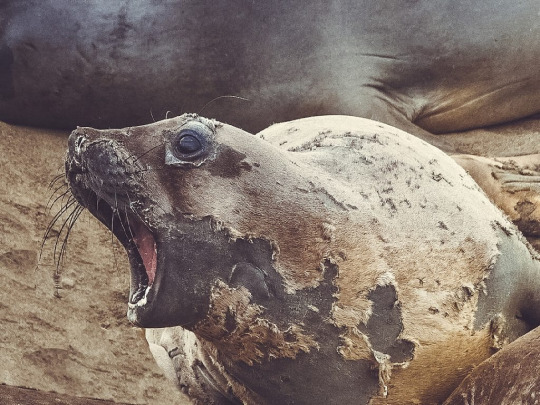
(image: a seal mid-molt)
The longer and more famous time on land is breeding season. In early spring, males will arrive on beaches and fight each other for dominance. In time, a few alpha males will claim most of the beach. These fights last even after the females arrive. Fights are very dramatic, involving posing and bellowing. If one male does not submit, they will fight by biting and slapping each other with their heads. Fights are rarely fatal, but are frequently bloody. Males have thicker skin on their chests to protect them during fights. Alpha males claim the right to mate with the females. Other males are forced to the outskirts of the beach, where they try to mate while the alpha is distracted. Some males will become betas, who help the alpha patrol his territory and drive off competing males. These betas will often try to mate while the alpha is distracted. Only the largest and strongest males can claim alpha status, and usually late in life when they have grown to their largest. After the females arrive, mothers will give birth to their pups. After birth, the female uses unique vocalizations so her pup can always recognize her. They nurse pups for up to 28 days while the males continue to fight. Elephant seal milk is extremely high in fat content, with up to 50% of the milk being fat, compared to 3.5% for cows. Some mothers may adopt the pups of others, especially if their own pup died before weaning. Weaning is very abrupt, after which the females will mate and the adults will return to the sea. The pups are left on land for up to 10 weeks, where they must learn how to swim and hunt while subsisting off the energy stores they built up while nursing. Juvenile mortality is high, with up to 50% of pups dying before reaching maturity. Adults can lose a third of their weight during breeding season.
youtube
(video: a clip from the BBC documentary Seven World One Planet about males fighting fro dominance. warning: there is blood)
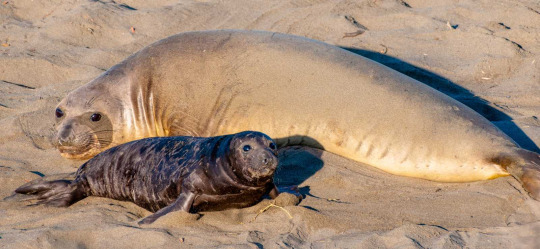
(image: a mother seal and pup)
A few pups are known as super weaners because they can grow exceptionally large during nursing. This is usually due to the pup being adopted by an additional female and therefore getting an extra dose of milk or it will steal milk from another pup. In a few cases, the mothers will just wait longer before weaning for unknown reasons. Average pups weigh between 110 and 160 kg (250 - 350 lbs) at weaning while super weaners can weigh up to 270 kg (600 lbs). They can put on so much blubber their ability to move becomes impaired. Super weaners are rarely observed again after leaving the rookery. It has been speculated that their excess blubber makes them exceptionally buoyant, reducing their ability to dive and making it harder to feed, leading to increased mortality.

(image: a chonky baby super weaner)
Both species of elephant seal were hunted to near-extinction in the 19th century as their blubber could be used to make exceptionally high-quality oil. After the hunting period ended, their numbers increased to the point both species are classified as least concern by the IUCN, though their populations have never risen to pre-hunting numbers and many areas that were historically occupied are now vacant. Genetic bottlenecks in both species has led to an increase in diseases and birth defects. El Nino is known to have a negative effect on northern seals by drastically increasing pup mortality, so this year was probably a bad one. One major limiting factor in their population growth is a lack of beaches to haul out on and many beaches they use are now protected by local laws or as UNESCO World Heritage Sites.

(Gif: a female versus a car. Round 1, fight!)
#wet beast wednesday#marine biology#biology#zoology#ecology#elephant seal#marine mammals#seal#seals#absolute unit#animal facts#cw animals fighting#chonky#Youtube
276 notes
·
View notes
Note
hi do you have any elephants
elephants eal❔

4K notes
·
View notes
Text
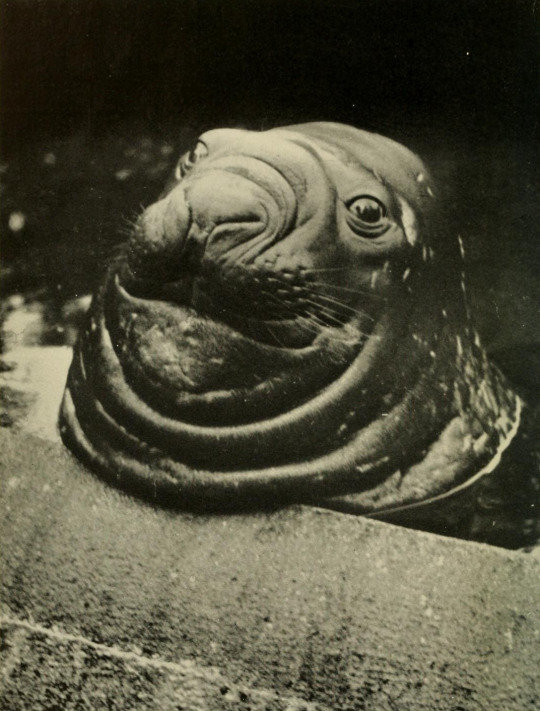
Roland, an elephant seal who lived at the Berlin Zoo
1935
544 notes
·
View notes
Text

'Der See-Elefant' (circa 1883) by Aloys Zötl (1803–1887).
Watercolour.
Wikimedia.
134 notes
·
View notes
Photo

i can’t believe elephant seals are real
#doodles#elephant seal#seal#lil funnies#actually one of my favorite animals they look so funny#like living puppets#i know one would kill me in a half second but boy do i wanna pet that thing#why did blob fish become like a meme thing#when 1 they dont actually look like the pink lil nose guy#and 2 ELEPHANT SEALS ARE RIGHT THERE
1K notes
·
View notes
Text
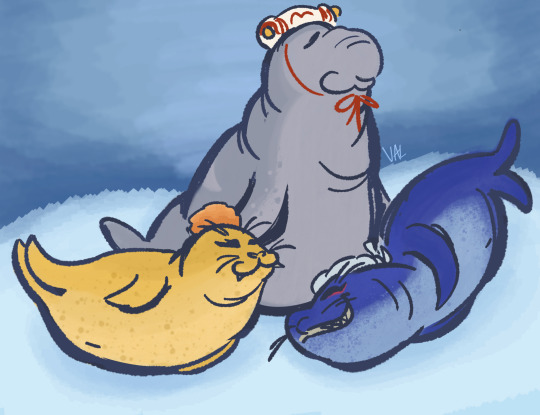
Deep Cut but they're seals!
#yippee!#frye#frye splatoon#frye onaga#spotted seal#big man#big man splatoon#mantaro#elephant seal#shiver#shiver splatoon#shiver hohojiro#leopard seal#pinnipeds#seals#seal art#splatoon#splatoon 3#splatoon art#artists on tumblr#digital art#rover art#if tags didn't make it obvious: frye is a spotted seal; big man is an elephant seal; shiver is a leopard seal
155 notes
·
View notes